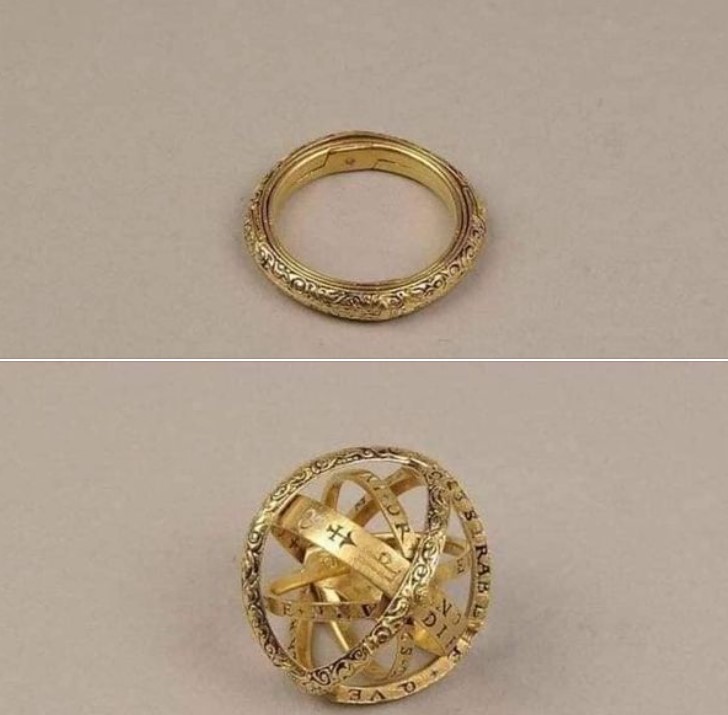A German engagement ring from the sixteenth century.. It was designed to turn into a mini astronomical map entitled “The whole universe is in your hands”
Since ancient times, astronomers around the world have used models of the sky to make calculations. With the advent of the armillary sphere, stargazers were given a physical model to better visualize the lines of celestial longitude and latitude.
Created independently in ancient Greece and ancient China, these armillary spheres consisted of spherical rings centered on either the Earth or the Sun. During the 16th and 17th centuries, these astronomy tools were sized down to become fashionable finger rings that moved just like regular armillary spheres.
The armillary sphere rings in the British Museum’s collection are made of a soft high alloy gold.
The British Museum has a collection of several armillary sphere rings that are incredibly well-crafted and detailed. When closed, they look like any other ring, but as the different bands are fanned out, the rings take on a unique quality. Built with anywhere between two to eight moving bands, these intricate pieces of jewelry would need to have been executed by skilled craftsmen.
Jewelry-loving modern astronomers seeking an old school finger-based calculation tool that really works can order armillary sphere rings from Brooklyn-based designer Black Adept.
While the rings were sometimes plain, others had inscriptions or signs of the zodiac placed in enamel around the bands.
According to the jewelers at Black Adept, these folding rings were popular through the 19th century as either a way for the wearer to show off their education or as a token of faith. The use of soft high alloy gold made them particularly prone to wear and tear, which is why the British Museum’s examples are so precious.





